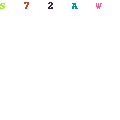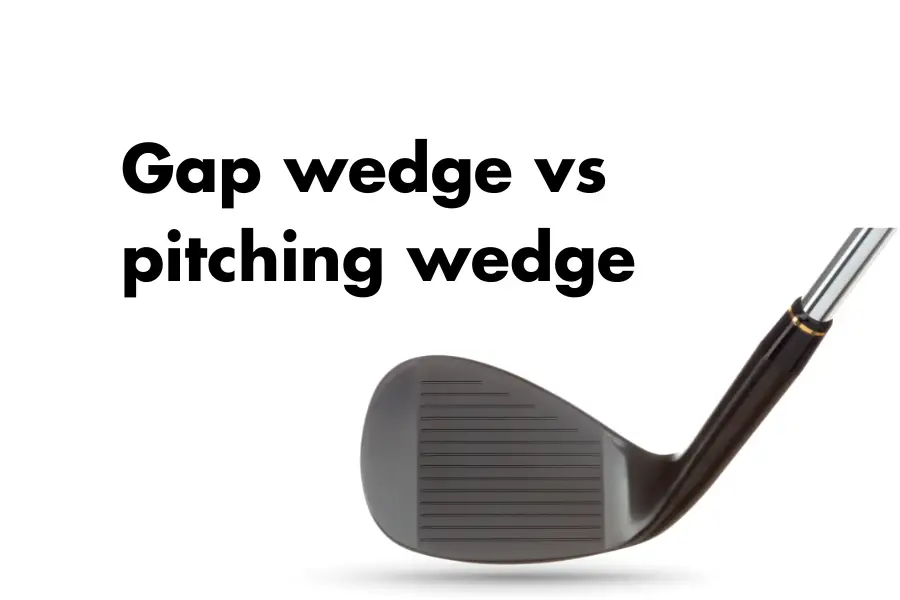Being a golf enthusiast comes with a number of choices and challenges to attain the perfect shot. Among them, comes the choice of the right club.
Choosing the wrong club can lead to missing birdie opportunities or making poor approach shots that shatter your confidence.
Every beginner golfer faces the question of what club should I choose for this shot multiple times on the course. Should I use an Iron or a Wedge? If wedge, which one? Are different types of Wedges interchangeable? Or do they hold the key to success?
Well, if you have such questions in your mind, you have come to the right place. I myself have been through this stage of uncertainty about choosing the right wedge, and through trial, and lots of errors, I have finally decoded the secret behind acing almost every shot on the course. And in this guide, I’m going to share that knowledge with you.
When it comes to choosing between a Gap Wedge vs Pitching wedge, most of the time, the gap wedge is the answer. With a loft of 50 to 54 degrees, which lies between that of a Pitching and a Sand Wedge, the Gap wedge enables you to hit distances achieved by both these wedges to some extent. With a Gap wedge in your bag, you can ace the shots that demand loftier trajectories than a Pitching Wedge without the harsh ascent of a Sand Wedge.
In this guide, I will walk you through the intricacies of the Gap Wedge and the Pitching Wedge. We will discuss their loft, distance, trajectory, control, shots they are best for, and limits and considerations of each wedge. So without further ado, let’s get into it!
Lets first get an overview of both.
Gap Wedge:
A Gap Wedge, also known as an Approach Wedge, is a golf club with a loft angle generally between 50 to 54 degrees. It fills the gap between the pitching wedge and sand wedge, making it suitable for shots requiring more loft than a pitching wedge but less than a sand wedge.
Pitching Wedge:
A Pitching Wedge is a club with a loft angle between 44 to 48 degrees. It’s typically used for shots that require higher accuracy and more distance than a sand wedge or gap wedge.
Quick Comparison: Gap wedge Vs Pitching wedge

In order to make better choices, knowing about what each of these wedges has to offer becomes crucial. As you prepare to step onto the course, here’s a concise breakdown of their key distinguishing points:
| Gap Wedge | Pitching Wedge | |
| Lofts | 50 to 54 degrees | 44 to 48 degrees |
| Yardages | 100 yards approx. | 110 yards approx. |
| Trajectory | Steeper | Flatter |
| Spin | Higher | Not as high |
| Versatility | Pitch shots, Full-swings, Bunker play | Approach shots, Chip shots, Punch shots |
Distinguishing both – Head-to-head comparison
Now, let’s get onto a detailed comparison of the loft angles, distance covered, spin, trajectory, bounce, and versatility of both the Gap Wedge and Pitching Wedge.
Loft:
The Gap Wedge has a loft between 50 to 54 degrees, which enables you to comfortably cover that tricky in-between distance. On the other hand, the Pitching Wedge, with its loft ranging from 44 to 48 degrees, delivers a more controlled shot that’s a bit longer than the Gap Wedge.
Distance:
In terms of distance, the Gap wedge and the Pitching wedge have a difference of 10 yards. If your target distance is near 100 yards, you should prefer a Gap wedge over a Pitching wedge. However, if it’s around 110 yards, go for the Pitching wedge.
Spin:
Now, let’s talk about spin control. The Gap Wedge is your go-to for delicate approach shots. With greater spin, it offers a balance between distance and precision, allowing you to land your ball softly on the green, just where you want it. As for the Pitching Wedge, its slightly lower loft offers good accuracy too, with a slight rollover.
Trajectory:

The gap wedge, due to its higher loft, gives a steeper trajectory. In cases where you want the ball to land softly and hold its position without overshooting it, this trajectory is most beneficial. On the other side, the pitching wedge’s trajectory is slightly flatter. This characteristic is helpful when you’re looking to cover a mid-range distance with accuracy.
Bounce:
The sole design of your club holds great value in making or breaking your shot. The Gap Wedge usually has a bit more bounce than the Pitching Wedge due to its sole design. This extra bounce is helpful when your ball lands on soft turf or sand, preventing the club from digging too deep and ensuring a clean hit. The Pitching Wedge, with a slightly flatter sole, works better on firmer surfaces.
Versatility:
Whether you’re facing a delicate pitch shot, a full-on swing, or a bunker play, the approach wedge is going to be helpful in all conditions. However, when it comes to longer approach shots where a bit more distance is required, go for a pitching wedge.
On the other hand, the pitching wedge comes in handy while dealing with precise chip shots and punch shots, and also dependable approach shots. However, the bunker shots aren’t its forte.
Related Reads:
Limits and Considerations
After learning about the benefits that both the gap wedge and pitching wedge offer, you might find yourself eager to have them both in your bag. However, there’s a limit set by the United States Golf Association (USGA) on the number of clubs you can carry, a total of 14, which encompasses drivers, irons, putters, and, of course, wedges. Within this restriction, golfers are faced with the challenge of deciding what earns a spot and what needs to be left behind.
Since most players already include the pitching wedge and the sand wedge in their bag, introducing the approach wedge can be a problem. You can either replace the pitching wedge with the approach wedge or, you can opt to retain all three wedges, leaving out a long iron or a fairway wood. Decide according to your playing style and course conditions.
Wrapping up

In your team of wedges, the Gap Wedge and Pitching Wedge are vital players, each with a unique role to fulfill. The Gap Wedge bridges the gap between your Pitching and Sand wedges, covering those distances that demand both precision and loft. The Pitching Wedge, on the other hand, ensures that your approach shots make it every time.
Remember that your choice of clubs is going to reflect your game on the course. If you’re having difficulty choosing the right ones, seek help from a more experienced golfer who knows your virtues and shortcomings.
At the end of the day, golf is about having a great time on the course. Best of luck!
FAQs
Q) Is a pitching wedge the same as a gap wedge?
A) No, a pitching wedge and a gap wedge are not the same. A pitching wedge typically has a loft angle between 44 to 48 degrees, designed for controlled full swings and accurate pitch shots. On the other hand, a gap wedge, also known as an approach wedge, generally has a loft angle between 50 to 54 degrees, often used for shots that require more loft and control than a pitching wedge but less than a sand wedge.
Q) When should I use my gap wedge?
A) Use your gap wedge for shots that fall between the distances covered by your pitching wedge and sand wedge. It’s ideal for approach shots where you need more loft and control than a pitching wedge but not as much as a sand wedge. Additionally, it’s handy for shots that require a higher trajectory with precision, like clearing hazards or making soft landings on the green.
Q) When should I use my pitching wedge?
A) Use your pitching wedge for approach shots that demand accuracy and controlled distance. It’s effective for shots requiring a flatter trajectory and when you need to hit specific targets on the green. Additionally, it can be used for chip shots, and punch shots as well.
Q) Is a gap wedge between sand and a pitching wedge?
A) Yes, a gap wedge is positioned between the sand wedge and the pitching wedge in terms of loft and function. It typically has a loft angle ranging from 50 to 54 degrees, filling the yardage gap between the other two wedges.
Q) Do high handicappers need a gap wedge?
A) High handicappers can benefit from a gap wedge as it offers versatility in approach shots. It helps bridge the yardage gap between other wedges, aiding in accuracy and control around the green. However, it’s a decision influenced by individual skill level and playing style.
A guy with a charming face following his passion (both Golf and Blog) from Kansas. Bryan is the writer and creator of IAmLearningHowToGolf.com, loves golf, but he didn’t start playing until he was in his 20s. He’s not a pro by any means, but he’s put in the time and effort to get pretty darn good. Bryan’s main goal with this blog is to help other golfers improve their game and have more fun on the course. He does this by writing informative, relatable, and down-to-earth content. When he’s not golfing or writing, Bryan enjoys going on hikes, spending time with his family, and watching movies sometimes. For any queries reach out to him at Bryan@iamlearninghowtogolf.com.

